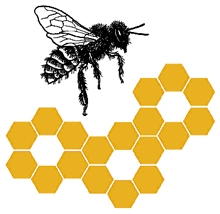The following was presented at the 2010 American Bee Research Conference in Orlando, FL.
17. Johnsonc, R., L. Petersc, B. Siegfriedd & M.D. Ellisc – DRUG INTERACTIONS BETWEEN IN-HIVE MITICIDES AND FUNGICIDES IN HONEY BEES – Beekeepers must often resort to using varroacides to reduce parasitic varroa mite populations in honey bee colonies. The utility of varroacides depends on honey bee tolerance of these pesticides at dosages that kill varroa mites. Honey bee tolerance of three commonly used varroacides – …



